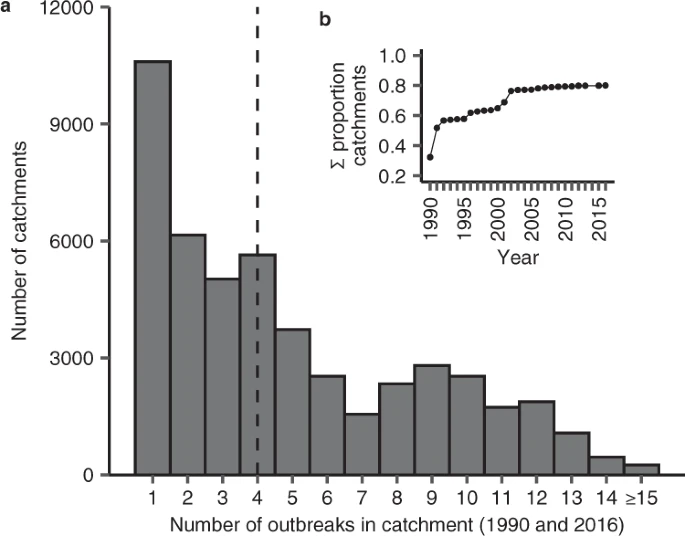Abstract
Insect defoliators alter biogeochemical cycles from land into receiving waters by consuming terrestrial biomass and releasing biolabile frass. Here, we related insect outbreaks to water chemistry across 12 boreal lake catchments over 32-years. We report, on average, 27% lower dissolved organic carbon (DOC) and 112% higher dissolved inorganic nitrogen (DIN) concentrations in lake waters when defoliators covered entire catchments and reduced leaf area. DOC reductions reached 32% when deciduous stands dominated. Within-year changes in DOC from insect outbreaks exceeded 86% of between-year trends across a larger dataset of 266 boreal and north temperate lakes from 1990 to 2016. Similarly, within-year increases in DIN from insect outbreaks exceeded local, between-year changes in DIN by 12-times, on average. As insect defoliator outbreaks occur at least every 5 years across a wider 439,661 km 2 boreal ecozone of Ontario, we suggest they are an underappreciated driver of biogeochemical cycles in forest catchments of this region.
Introduction
Freshwaters are the main conduit for transporting macronutrients, including carbon (C) and nitrogen (N), between their major reservoirs on land and the oceans1, 2. Thus, the nutrient status and subsequent functioning of freshwaters closely reflect their surrounding catchments 3. C and […]
Full article: Forest defoliator outbreaks alter nutrient cycling in northern waters

